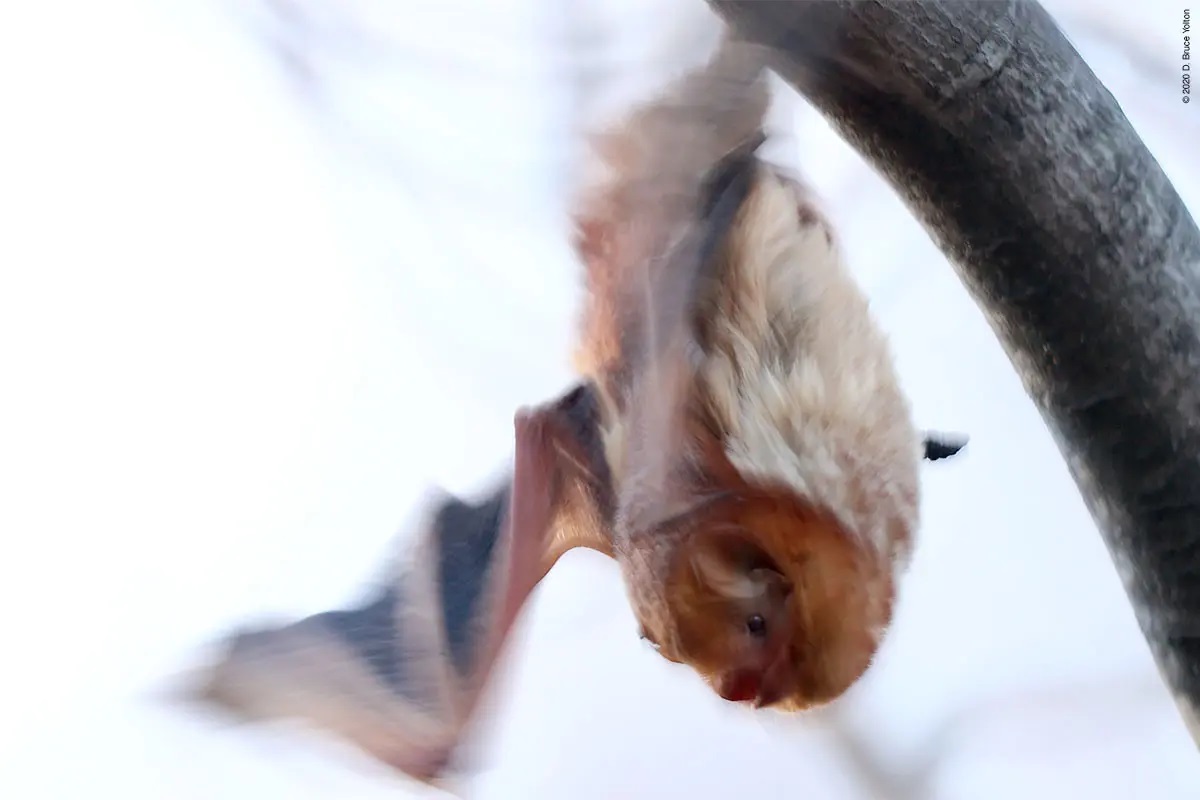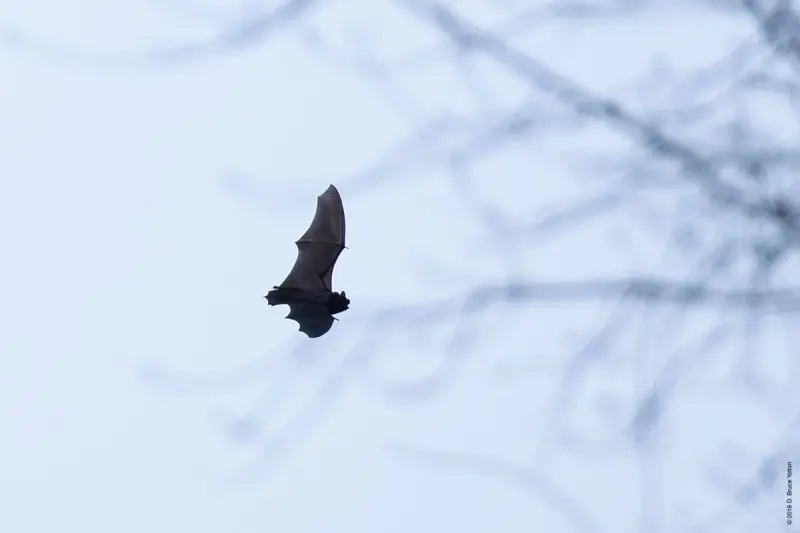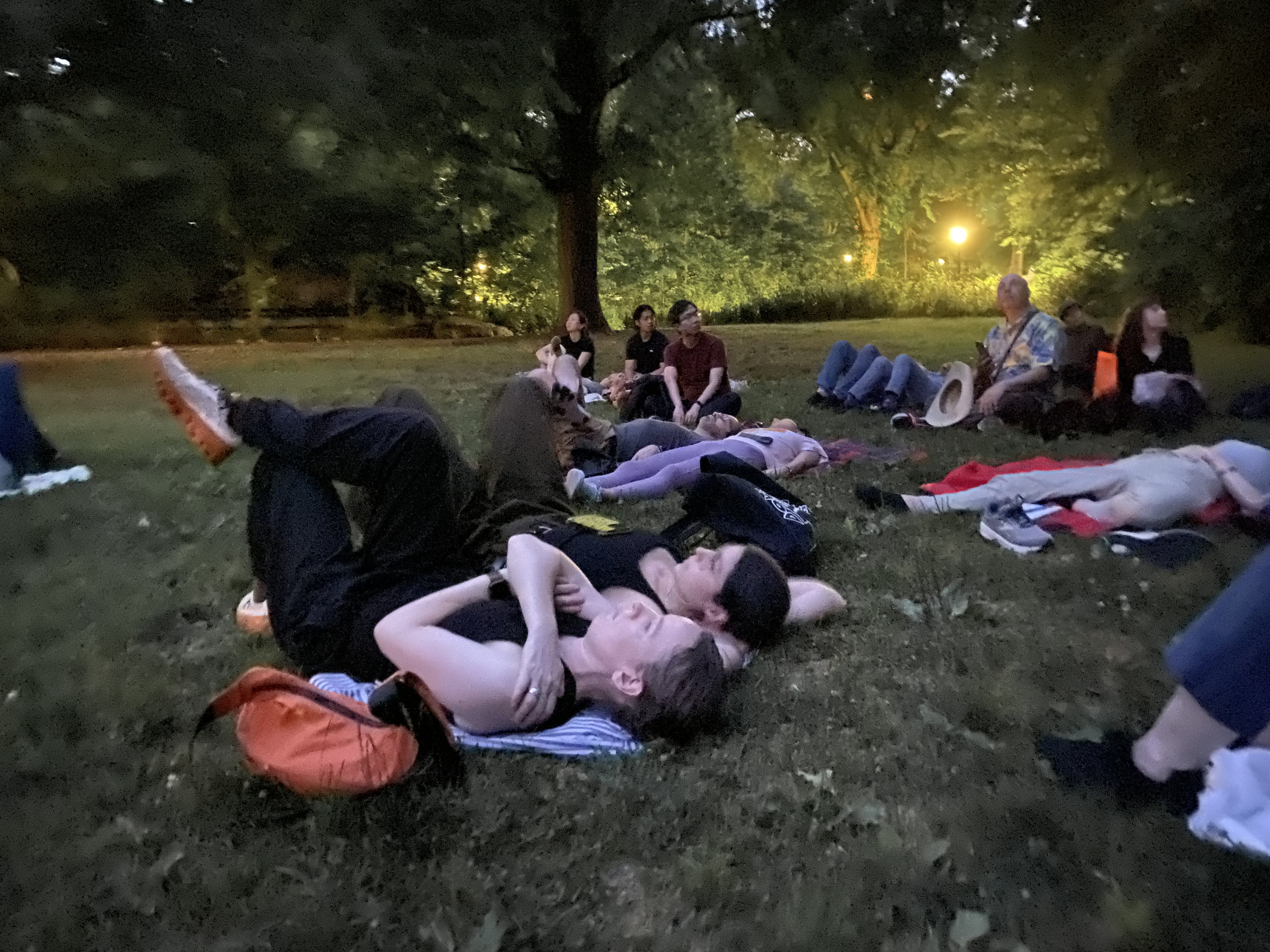
By Bonnie Eissner
I’ve long appreciated Central Park for its biodiversity, including its breathtaking flowers and trees and its magnificent birds, but what about bats? The idea that the Upper West Side’s virtual backyard could be a habitat for these strange creatures never crossed my mind until I read online about a bat walk in the park organized by the Linnaean Society of New York, which offers free nature tours and lectures.
My curiosity was piqued, I signed up and I was not alone. The annual event drew a large crowd. Savannah Conheady, who lives in Hell’s Kitchen, gave up a cocktail party thrown by a friend to attend her first bat walk. Cristina Cristian, of Astoria, came for her fourth.
Danielle Gustafson led the walk with the help of her husband Brad Klein. A bat enthusiast, she began leading walks in Central Park 20 years ago after joining a friend on a natural history tour of the Brazilian Amazon, organized by the New York Botanical Garden and Bat Conservation International, to capture and observe bats.
“I came out of the Amazon with this feeling of, ‘Wow, bats are amazing, and now I want to learn everything I can about them,’” said Gustafson, who, when not bat-watching, is the executive director of the EMS FDNY Help Fund, which supports FDNY emergency medical technicians and paramedics.
During her trip, she met the chairman of the board of Bat Conservation International and soon after began attending board meetings.

Gustafson took his first Central Park walk with Kate Jones, a postdoctoral researcher at Columbia University’s Earth Institute who was working on “extinction prediction,” specializing in bats. Gustafson, Jones, and other researchers and enthusiasts formed the New York Bat Group to learn more about the city’s understudied bats. Jones returned home to England in 2005, but shortly before she had handed over the reins to Gustafson, who had no formal scientific training and was initially hesitant. But Jones convinced her, telling her that bat-friendly education was needed, a change in the miscommunication bats have historically been subjected to. “She gave me her PowerPoint,” Gustafson said, “and said, ‘Our motto is: Bats need friends.’”
Gustafson adopted the slogan and has been organizing bat walks ever since.
The Linnean Society’s walk began at 7:45 p.m. in front of the American Museum of Natural History, where Gustafson first spoke about bats and what we might see in the park.
Bats are the only mammals that can fly with the help of a motor, she explained, and they are ecologically important. Not only do they feed on large quantities of insects, but in other areas they pollinate plants like bananas and agave, the source of tequila. Bats also live longer than other mammals their size. They can live up to 30 years, and most have only one young per year. “Being a bat is like living in the right lane,” Gustafson said.
At night, bats hunt insects: mosquitoes, moths, and beetles. Contrary to rumors that bats fly into people’s hair, they are afraid of humans and avoid them. If a bat is flying nearby, it is probably looking for the insects that we attract.
Bats appear silent to humans, but that’s only because the sounds they make help map their surroundings via echolocation The frequencies are higher than what humans can hear. Bat detectors can hear bats’ ultrasounds, and some devices, like the tiny Echo Meter Touch, a smartphone plug-in that Gustafson brought, can even identify a potential bat species.

No one knows how many bats live in Central Park—a lack of data that dismays Gustafson—but five species of bats frequent the park. There are three types of bats that roost in the trees: Eastern red bats (the most abundant), silver haired batsAnd hoary bats. Big brown bats And tricolor batswho hibernate in caves during cold weather also use the park.
With the sky still clear, Gustafson and Klein led the group through the park, looking for chimney swifts flying above the trees. These small birds feed on insects. Their presence at sunset means the bats, which can consume much of their body weight in insects each night, will be in the same place later, Gustafson explained.
We stopped first at Oak Bridge, which stretches across the lake, to watch and listen, using portable bat detectors distributed by Gustafson, for bats coming to drink.
No bats flew to the lake that night, but a family of bathing raccoons sparked interest.

The evening came alive as we headed to a small field, Burns Lawn, west of Ramble. Lying on blankets, we watched the silhouettes of bats dart and dive, skimming over the insects. The experience was mesmerizing, like watching a silent air show. We squealed and gasped as these elusive creatures soared overhead. Bat detectors beeped with each flyby, and Klein, who had an Echo Meter Touch, called out the species. Most were eastern red bats. In a rare occurrence, a big brown bat and a silver-haired bat flew together, wing to wing.
Gustafson shared more information about the bats between observations.
Threats to bats, such as white-nose syndrome, are a concern, she said. The fast-spreading fungal disease infects hibernating bats, causing them to wake more frequently and eventually starve to death as their fat reserves are depleted. The syndrome has killed millions of bats and led to the local extinction of once-popular species, including the little brown bats that once frequented Central Park.
The dangers bats face from urbanization and deforestation make Gustafson, who is a board member of Bat Conservation Internationalparticularly interested in urban bats. “I think urban bats are some of the most important,” she said. “As we urbanize the United States, it seems to me that we need to figure out how to coexist. And if we figured out how to conserve these bats in Central Park, that would give us a really good idea of how to conserve bats elsewhere in the United States.”

She believes her walks help people look up and see bats. “If you’ve been to Central Park at night, you’ve seen bats,” she says. “This idea of turning on the lights to see bats, I think there’s something really magical about that.”
My walking companions and I agree. “I loved learning and walking through the park with all the fireflies, and then seeing my first bat in Central Park,” Conheady told me. “Wow, how lucky are we? I almost shed tears of gratitude.”
Interested Upper West Side residents can look for local bats on warm nights at dusk in Central Park and Riverside Park, where they forage for insects.
Subscribe to the FREE West Side Rag newsletter here.